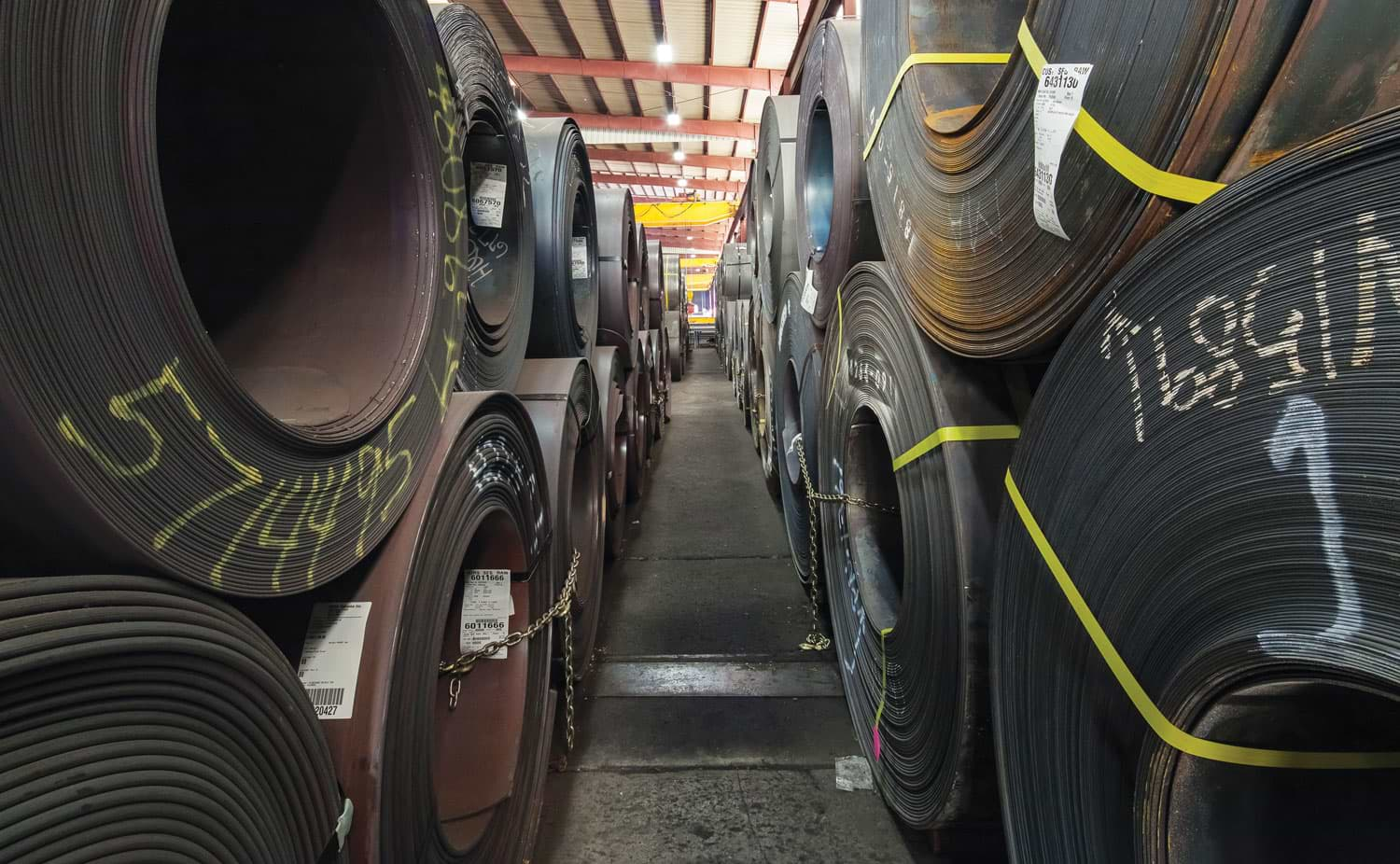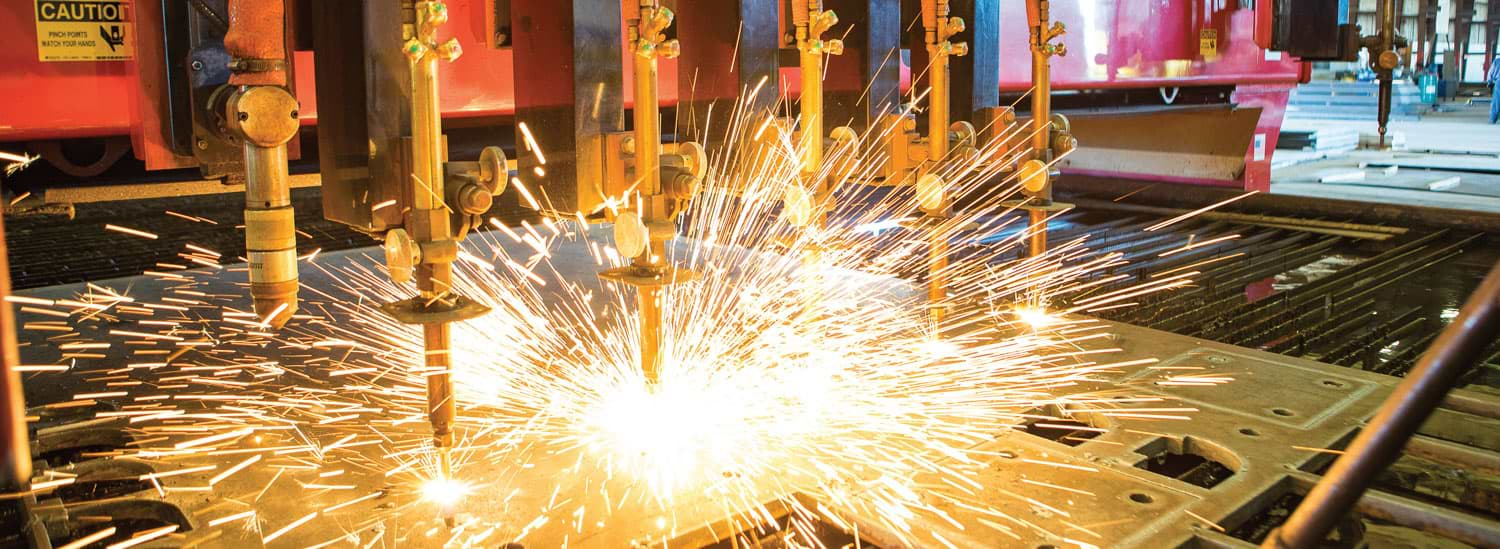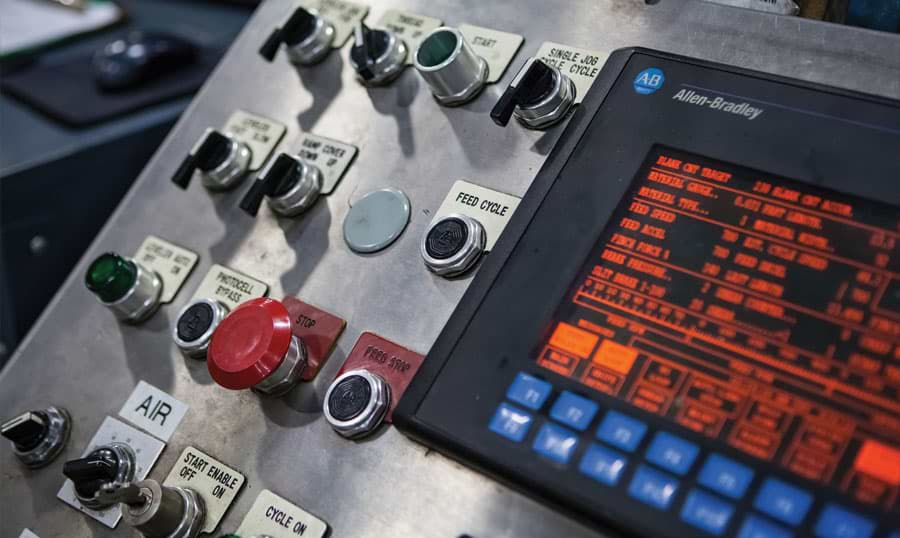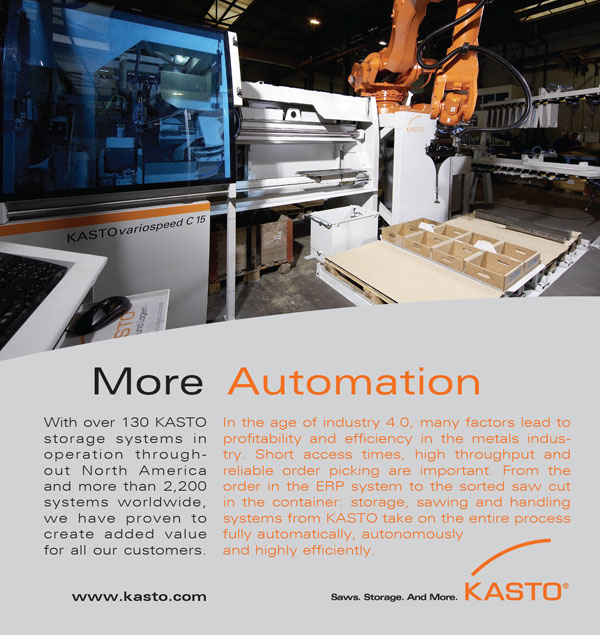
lthough the global economy and the metals supply chain is suffering a direct hit as a result of the coronavirus outbreak, companies must strategize for the long term, for what comes after.
The manufacturing and distribution worlds were already heading toward a more thorough understanding of everything they do from purchasing to accounting and processing to delivery by accessing data. Data-driven decisions help companies heighten efficiencies and control costs.
“The metals industry is extremely competitive. There are low barriers to entry and thousands of competitors. The only way to succeed is to find efficiency,” says Matt Meyer, vice president of digital innovation for Kloeckner Metals Corp.
“But, the traditional ways to drive out costs and derive efficiency have been exhausted. We’ve focused on the factory to understand and improve workflow. Now, we’re bringing technology to bear in a much bigger way,” says Meyer.
Digitalization marks a structural shift that enables managers and employees to extract efficiencies from the shop floor, shipping and receiving, and in inventory tracking and reordering.
“If you’re not preparing for the future platform economy, or automation between your company and your customers, you’ll be disrupted,” says Meyer. “If you don’t adapt and become a leader in employing technology, you’ll find yourself in big trouble in the future.”

McKinsey & Co., a global management consulting firm, defines Industry 4.0 as the next phase in the digitalization of the manufacturing sector, driven by four disruptions:
- The rise in data volumes, computational power and connectivity;
- The emergence of analytics and business-intelligence capabilities;
- New forms of human-machine interaction, such as touch interfaces and augmented-reality systems; and
- Improvements in transferring digital instructions to the physical world, such as advanced robotics and 3-D printing.
Rather than adopting a purely futuristic view, Meyer and his colleagues see Industry 4.0 more simply as supply chain automation. To that end, Kloeckner Metals examines supplier, customer and facility needs, then implements technology designed to improve uptime, drive efficiency, increase transparency and better understand metrics.
The Germany-based distributor is leveraging new technologies to improve operations at its more than 45 U.S. locations (and 170 facilities worldwide).
For example, Kloeckner examined the movement of material throughout its Tulsa, Oklahoma, facility, then employed radio-frequency identification (RFID) and Bluetooth technology to keep tabs on every piece of metal—at any given time.
The move solved locating materials, one of the plant’s greatest challenges. The 166,000-square-foot service center houses thousands of skids or SKUs of material, which are constantly on the move. It was challenging to keep accurate records of material transitions.
“We spent too much time locating one SKU,” Meyer says. “We put sensors throughout the factory and purchased Bluetooth tags, and put them on all products, finished goods and raw material.” This produced a clear read on exactly where everything was located, saving time and energy. Today, workers locate SKUs within 8 minutes, “a dramatic improvement made possible by strategic digitalization,” says Meyer.
This project led to efficiencies elsewhere. The company once pre-staged truckloads for pickup; they simply spent too much time searching for materials to do it any other way. The ability to quickly locate skids eliminates the need for pre-staging. “We now can get multiple, additional trucks through the plant on any given day, and we have reduced unnecessary labor and overtime hours,” according to Meyer.
He concedes there was a “huge learning curve, given the lack of off-the-shelf solutions. Fortunately, we had a narrow scope. We eventually achieved what we wanted, but it was a bigger lift than we anticipated.” The positive effects were found to be worth it.
Kloeckner has also sought to drive efficiencies to its customer base through RFID. Working in concert with customers to supply material pre-tagged with RFID allows customers to realize significant time savings both at the receiving dock and beyond. The ability to follow raw material through the manufacturing plant to the point of use, provides a level of transparency and automation that drives substantial efficiency gains in the supply chain.


Kloeckner Metals is now working on plans to automate outgoing loads. Currently, supervisors manually check every truck before departure. “We’d like to employ a red light/green light system, so drivers know that if the light is green, the load matches what is on the manifest,” Meyer says. The company has already integrated RFID into many of its service centers.
Kloeckner Metals began its business process renaissance by reaching for the low-hanging fruit, such as automating sales processes or procurement operations. Success in this area allowed the company to continue to move closer to true Industry 4.0.
The company automated the inside sales role first, where Kloeckner team members digitalized the contractual side of the job, which Meyer describes as, “high-volume, repetitive order entry.” In the past, mountains of orders poured in via email, and sales personnel printed out the orders, stamped and initialed each one, then keyed the data into the ERP system, which sent each order to production. This process can take employees more than half a day.
Half of all orders now enter the system automatically, with an aggressive goal to continue to grow this automation. “There are far fewer instances of calling customers to change sizes or to notify them that what they asked for in the email won’t be exactly what we’ll deliver,” says Meyer. The Kloeckner system instead displays actual inventory for customers to see.
This frees salespeople to monitor customer-provided forecasts and incorporate that data into their own forecasts. Before, sales spent more time keying in orders than studying metrics and forecasting “but now we live and die by forecasts,” comments Meyer. “The paradigm shift is salespeople are now being paid to do analysis,” rather than administrative work, and they are using their expertise more wisely and profitably.
On the procurement side, employees scoured printed reports, spreadsheets and other materials to determine purchases. In many cases, they would only look at a particular group of items every two weeks because the volume of data was too overwhelming. But, says Meyer, “a lot can happen in two weeks.”
Kloeckner Metals addressed this bottleneck by building an Inventory Planning Tool into its ERP. Meyer describes it as a manage-by-exception system driven by parameters set by buyers. The system defines an optimum inventory level; then, personnel manage the exceptions within those parameters. Eventually, Kloeckner leadership plans to automate optimization at the SKU level to put machine learning behind these parameters. The goal is to build a system that completely automates ordering of highly repetitive SKUs, with the purchasing team focused on exceptions, mill relationships and commercial opportunities.
“Even with automation, there is still a lot of work for the buyer to do in working with suppliers, transportation and production,” Meyer notes. “That’s where they need to spend their time and energy and use their expertise.”

The company has built a Kloeckner Connect platform. This software tool allows customers to check on the status of orders, see efficiencies in their supply chains, and communicate with dedicated account managers in real time.
“Many customers are tasked with having uninterrupted supply and want to understand what is going on at their limited supply base,” Meyer says. “We provide graphs and charts through our platform to help them understand how material is flowing. They’ve never had access to this level of inventory transparency and usage history until now.”
Kloeckner Metals also asks customers to partner with them in electronic data interchange (EDI) reporting. Those who adopted EDI have reported improved accuracy, increased transaction speed and higher productivity.
“Before using EDI, customers had to enter an order into their own system, then a second time into the Kloeckner order system,” Meyer says. “Now they enter the order once, and it goes directly into our system.”
Selling these tools at the C level or commodity manager level is critical, he says. “Once they see the vision, understand the savings and how it drives efficiencies, they make it an IT priority.”
The final phase of Kloeckner’s charge toward Industry 4.0 will be in house. Kloeckner plans to place sensors on all equipment to better understand machine failure points and predict downtime.
“This change will be slower and more capital intensive. Much of the equipment in the metals industry is older—built long before everything was wired up and there were outputs coming from the machines themselves,” Meyer says.
The company has automated some processes on the factory floor; operators no longer must input job numbers, time of production and other parameters into the ERP, for example. Workers also analyze data for predictive maintenance. Although Kloeckner Metals is not quite at the intelligent factory level yet, it is moving in that direction.
“Right now, we’re trying to better understand the machines and how we focus our efforts for tangible results,” says Meyer. “Eventually, we’d like to use technology to allow one process to automatically drive the next process in the supply chain. That is really the goal of the intelligent factory—machines talking to one another.”
